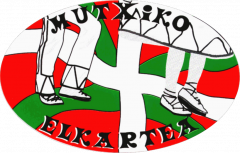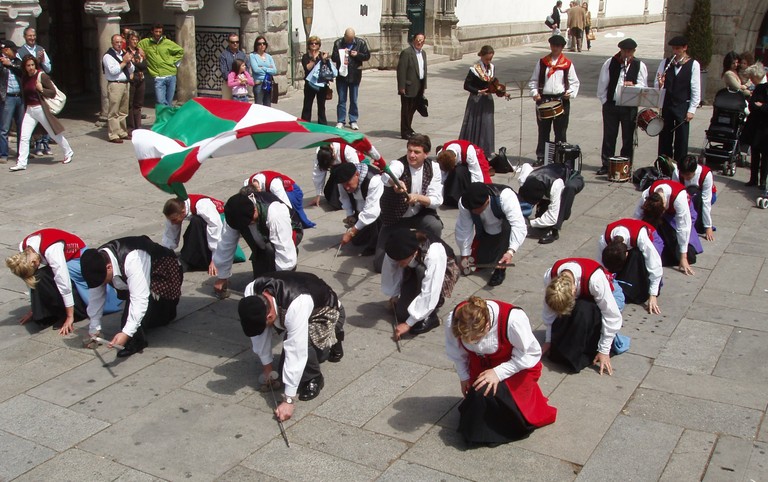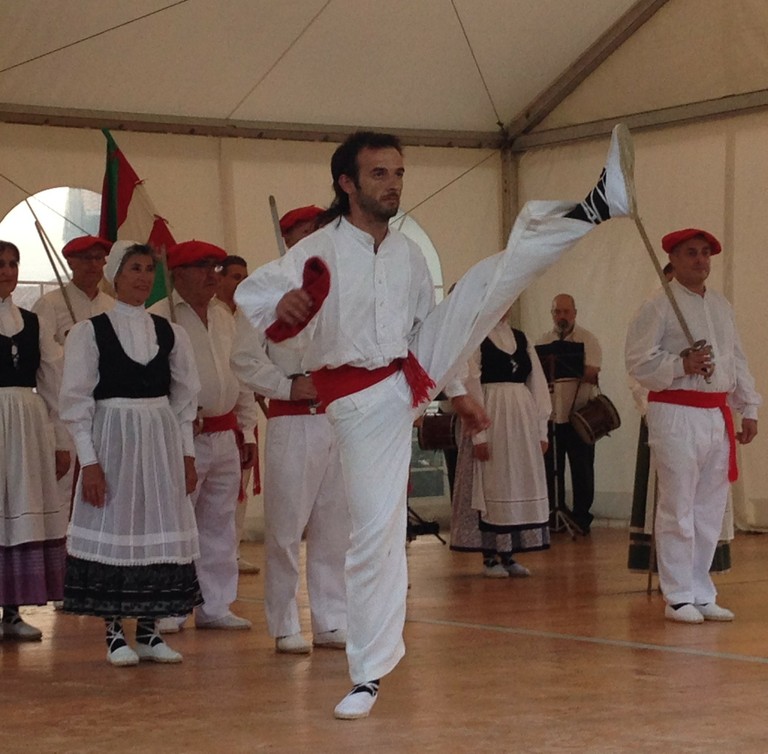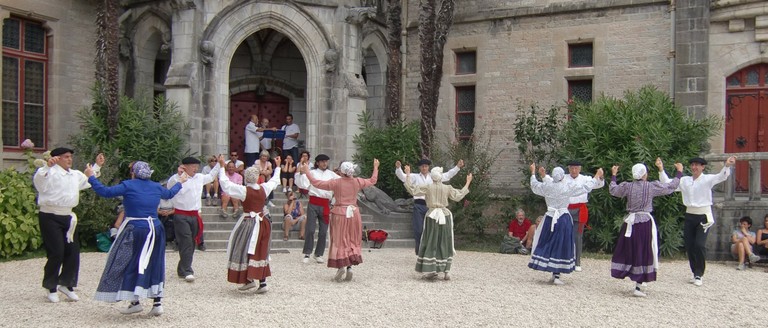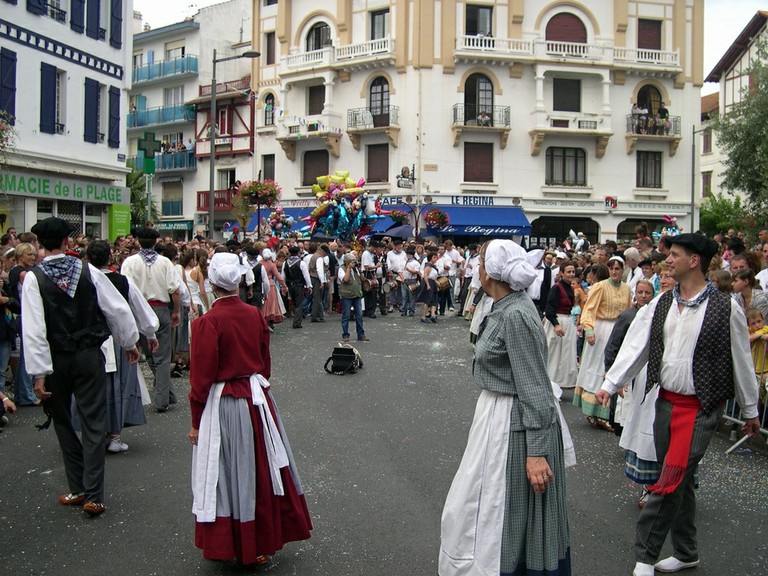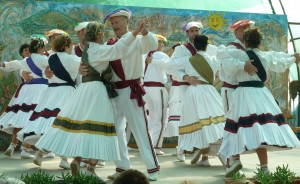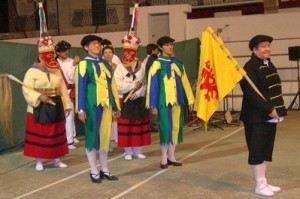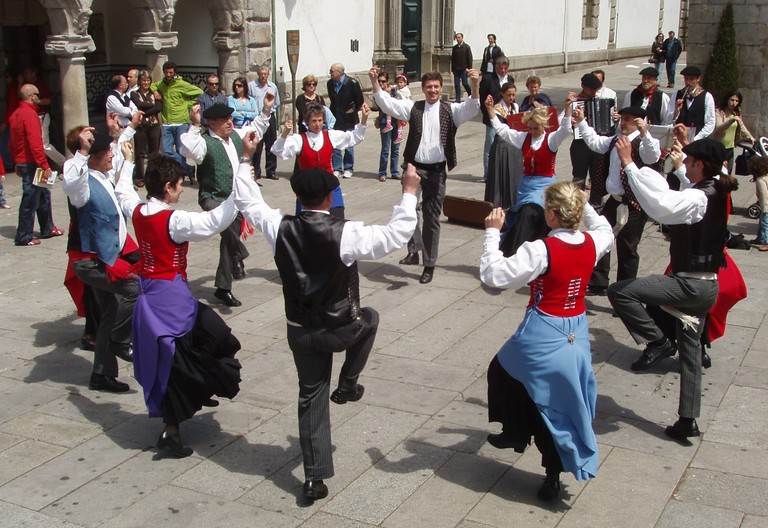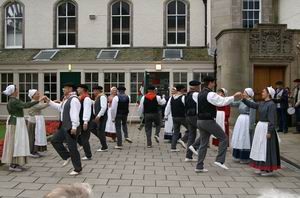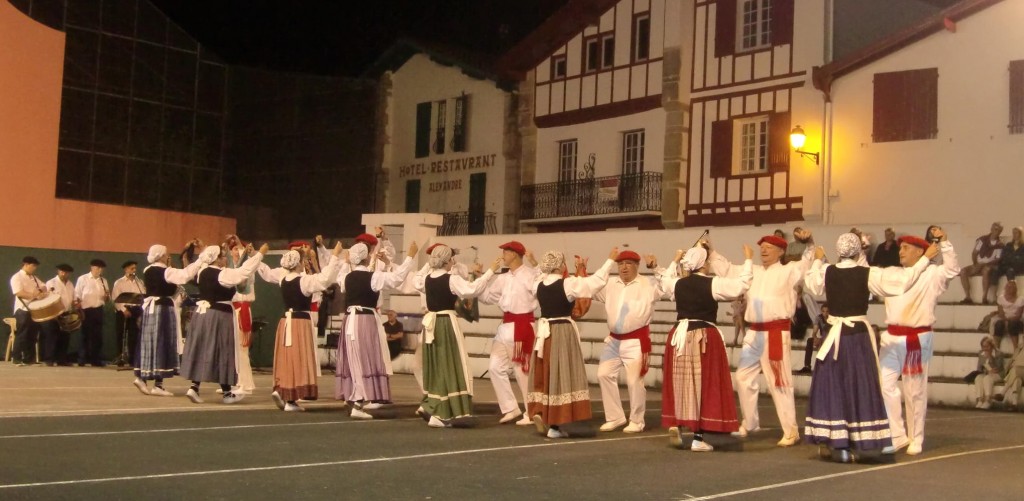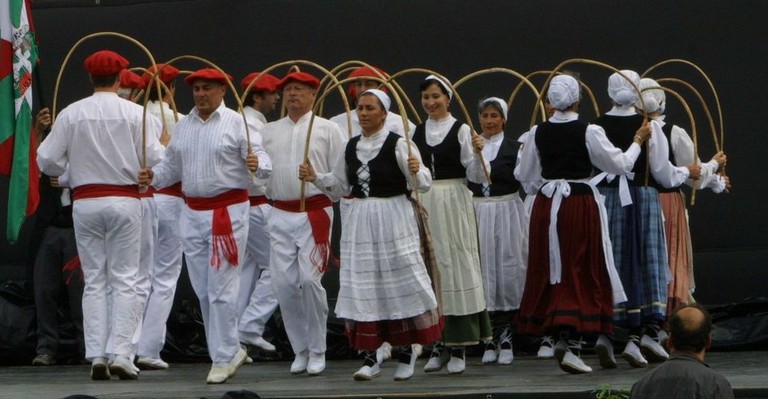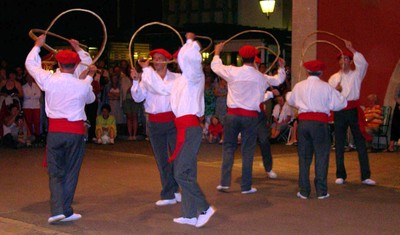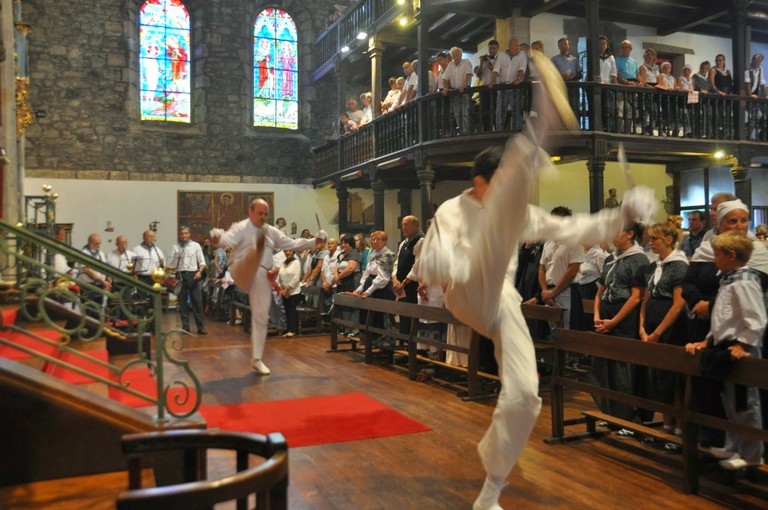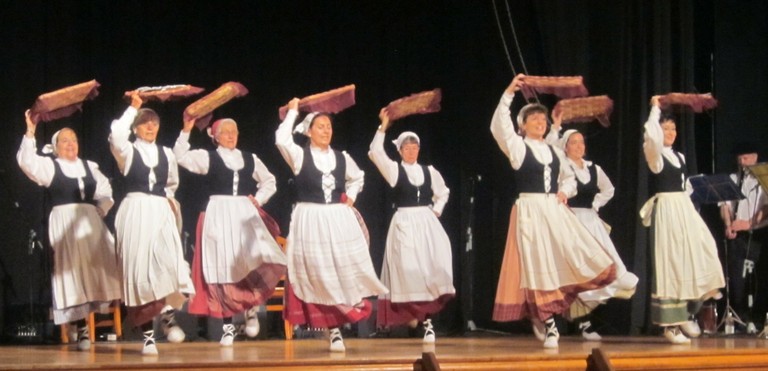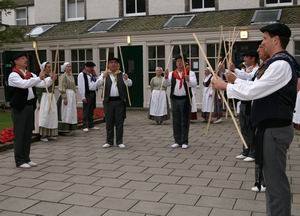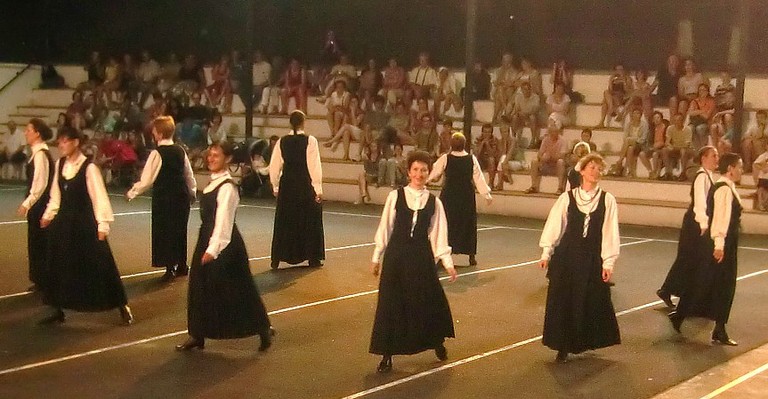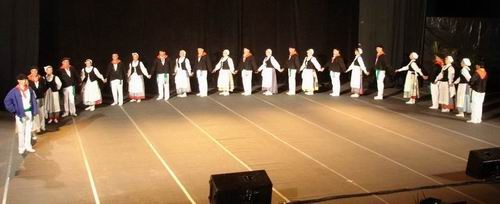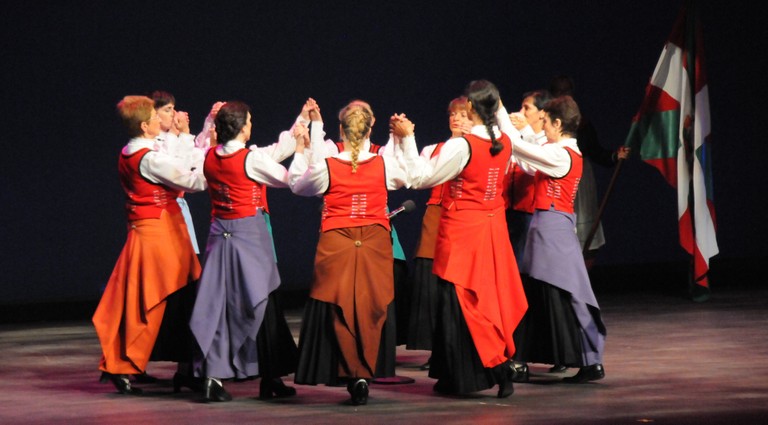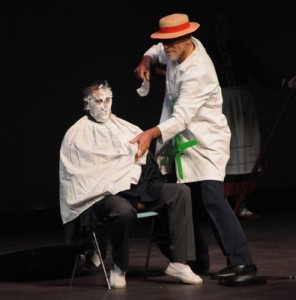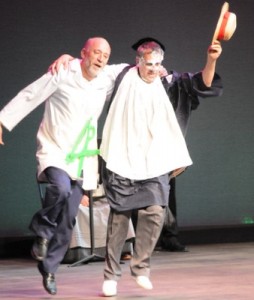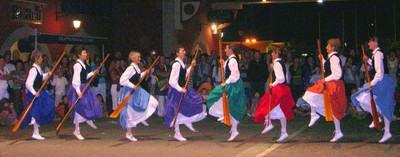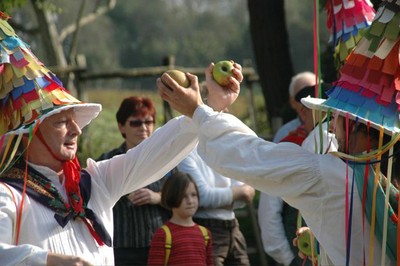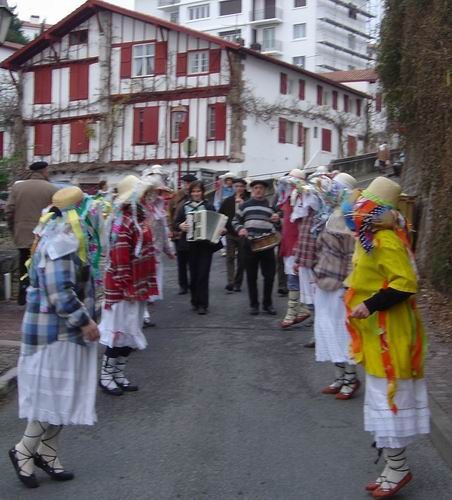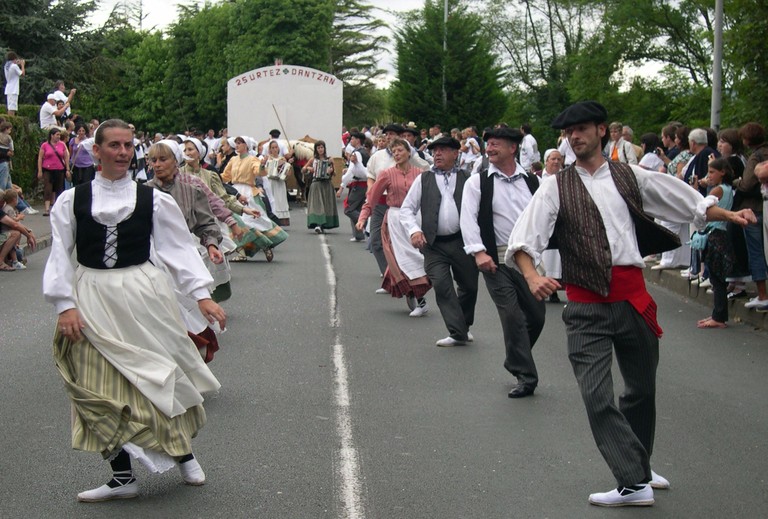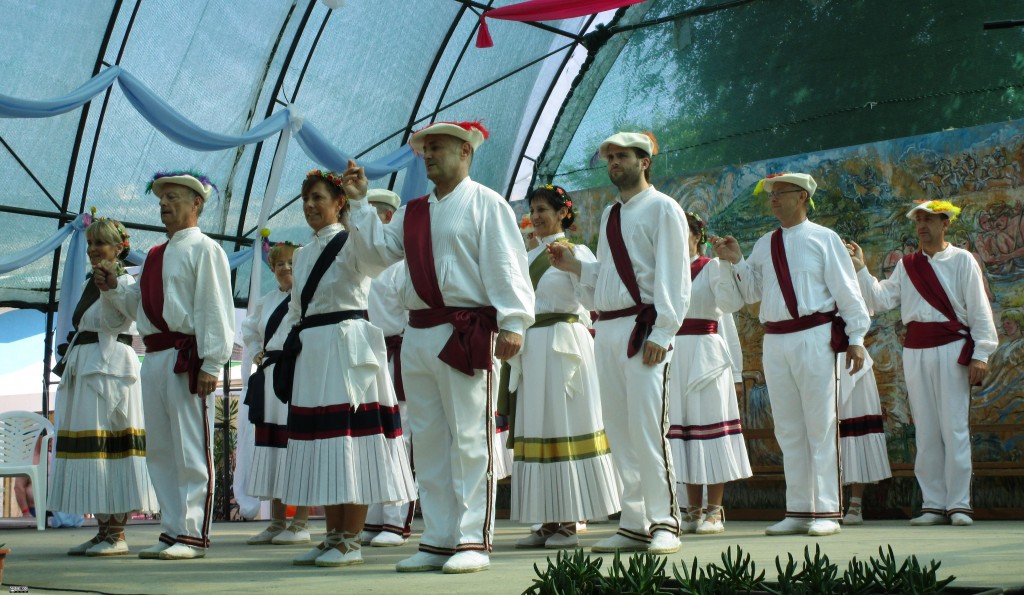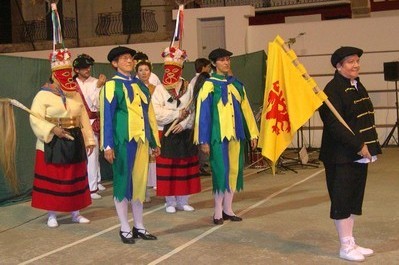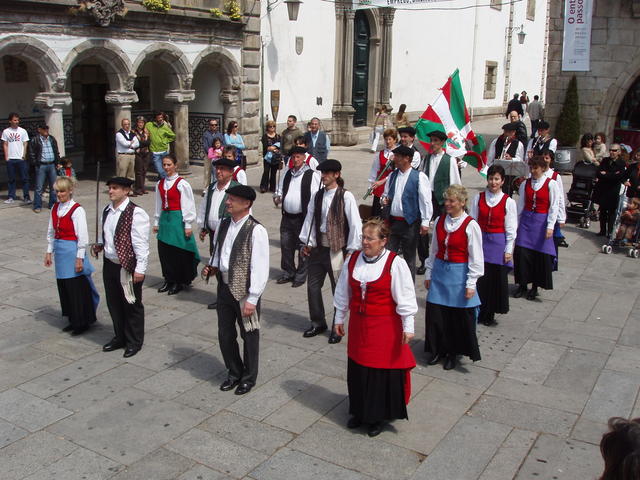The group performs dances of the different Basque provinces:
- The dance of the Basque Flag (Ikurrin dantza or Agintariena)
This is the dance that is performed to make the introduction of the dancers to the audience, hence, it is danced in first place. The more characteristic is the waving of the Basque Flag ( Ikurrina) on top of the heads of the dancers.
-
The bow (Agurra)
The “Agurra” is danced in ceremonies and to bow to important personalities.
- Fandango and Arin-arin
Very typical dances widely spread along Basque Country. The Fandango is always followed by the Arin-arin.
-
The Basque jumps (Jauziak or Mutxikoak)
Most likely one of the oldest traditional basque dances among the “closed chain” dances; participants go into a big circle and they tie the steps following the orders of a “narrator”. There is a big variety of jump dances.
- The Labourd Carnival (Lapurdiko Ihauteria)
This is a complete performance that includes various dances: Maska dantza and Kaskarrot martxa, Marmutx, Makil dantza, Xinple, Zapatain dantza, Jauziak, the Polkas and ends up with the Soka. The dance is accompanied by a “Konparsa” formed by dancers dressed with masks and colourful costumes that represent different characters of the carnival.
-
“Jotas”
Among the jotas Mutxiko performs Jota from Tafalla, Jota from Salinas and Jota from Tudela, all of them typical from the villages that hold their names.
-
Ingurutxo
Ingurutxo means “circle” or “petit tour”, hence it is danced in couples that go in a circle, counterclockwise. Couples hold the same handkerchief from opossite sides and men play castanets.
-
Ttun-ttun
This a variation of an Ingurutxo, also danced in couples holding handkerchiefs.
-
Gorulari
A dance from Biscay, danced with wooden arches
- Uztai txiki
A dance from Gipuzkoa, performed by men, who hit energically the arches among them.
- Ezpata-danza (dance of the swords)
Ezpata-dantza is believed to be the oldest traditional dance of Gipuzkoa. It is a dance that is usually danced on important occasions, and has frequently been linked to the Corpus Christi celebration, St. John’s day and to the main local festivities. The ezpata-dantza has traditionally been performed inside the church or in processions. A small variation of the dance with small swords is performed on such occasions and is known as Jaunaren aurrekoa (dance in front of Our Lord). An unusual feature of the Jaunaren aurrekoa is that the dantzaris never turn their back at any time during the dance to the altar, to Our Lady or the saint in front of whom they are dancing.
Photo by Manex Barace
- The Fishmongers (Matelotak)
Only danced by women. Dancers hold a basket that symbolises the basket where fishmongers used to place the fish they had to sell.
-
Sticks (Makil dantza)
This dance is danced only by men formed in semi-circle holding two wooden long sticks each.
-
Axuri-Beltz
This dance is one of the few singing dances that are kept (dancers sing at the same time they dance). It is danced only by women, in a closed circle, going counterclockwise and wearing the costumes worn in the Salazar valley on the early XX. century.
-
Branlea
The dancers dance holding hands, intercalating mane and women, at “kontrapasa” rythm. It is one of the mosnt elegant dances in the Basque Folklore.
-
Irradaka
IRRADAKA is a dance, sang and danced by women. The one danced by Mutxiko Elkartea was created by Juan Antonio Urbeltz specially for the performance Aunitz Urtez.
- Bizar dantza (Barbers’ dance)
A comic representation of the barbers’ job, perfomed by two dancers
-
Bateleras
During the XIX. century, it was women who rowed in boats, to cross the short distance by water between Pasajes de San Juan and Pasajes de San Pedro (Gipuzkoa). During the festivities, they used to dance with their rows. This is the origin of this dance; Bateleras from Pasaia. It is a dance performed just by women.
-
Sagar Dantza from Arizkun (dance of the apple)
Dance from de Baztan Valley, Navarre. Only for men, this dance is inspired in a rituel of the apple.
-
“Zortziko” from Lantz
This is a dance from the small village of Lantz, located in the Baztan Valley where they celebrate a very popular carnival that attracts many visitors. During the carnival they dance this “Zortziko” that has become a must in the repertoire of every folk dance group in the Basque Country.
DIFFERENT COSTUMES USED BY MUTXIKO ELKARTEA
-
TRADITIONAL COSTUME
Basque traditional costume. It was used by our ancestors both in village and cities. Nowadays it is used in all basque popular festivals.
-
COSTUME OF LAPURDI
Traditional costume of the basque province of Lapurdi, mainly used to dance the “Mutxikoak” and the Carnival of Lapurdi.
-
COSTUME OF JAURRIETA
This is only worn by women to dance Axuri-Beltz and other dances.
- COSTUME OF NAVARRE
Costume inspired in the costumes used in the province of Navarre
